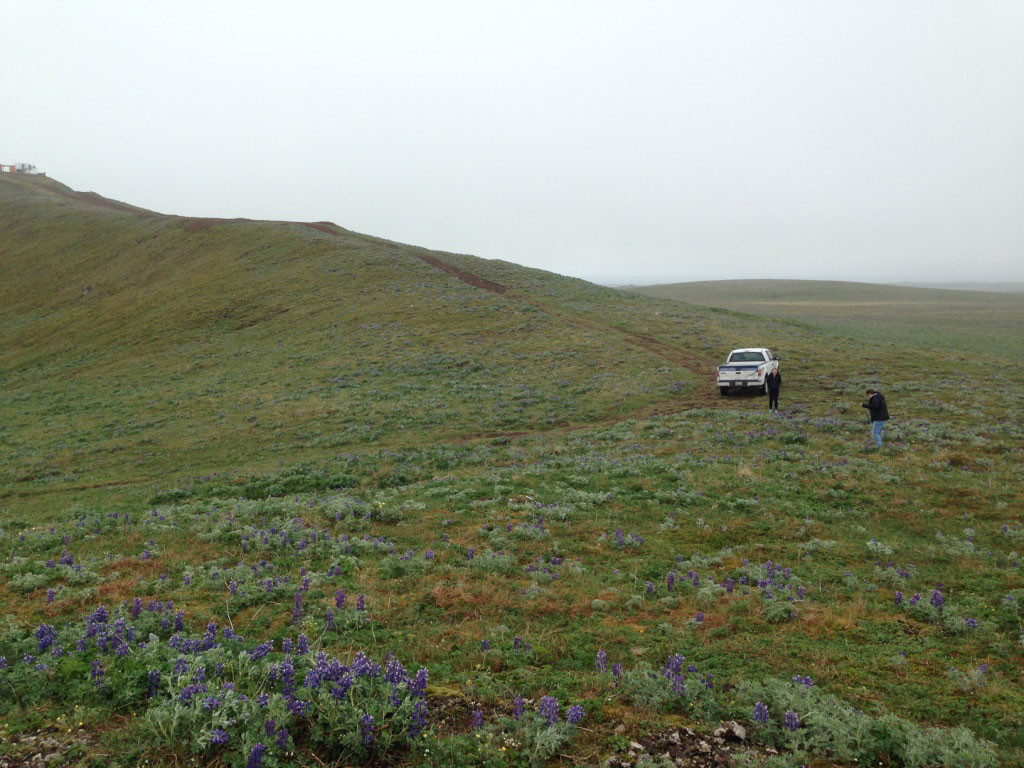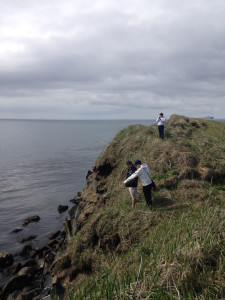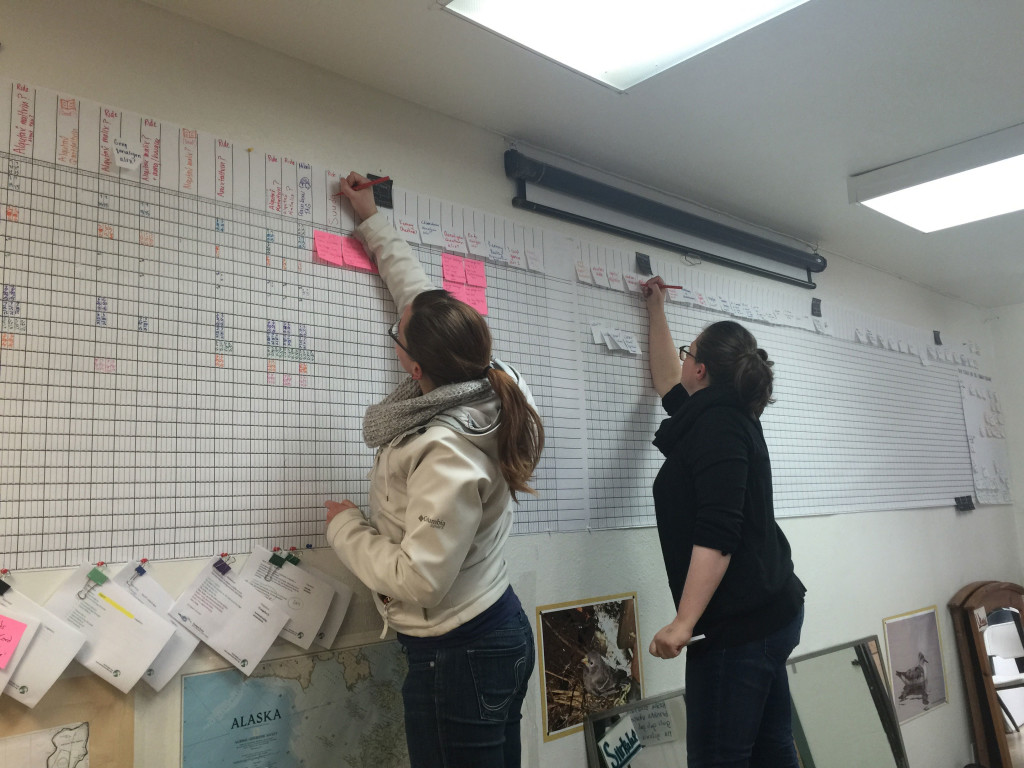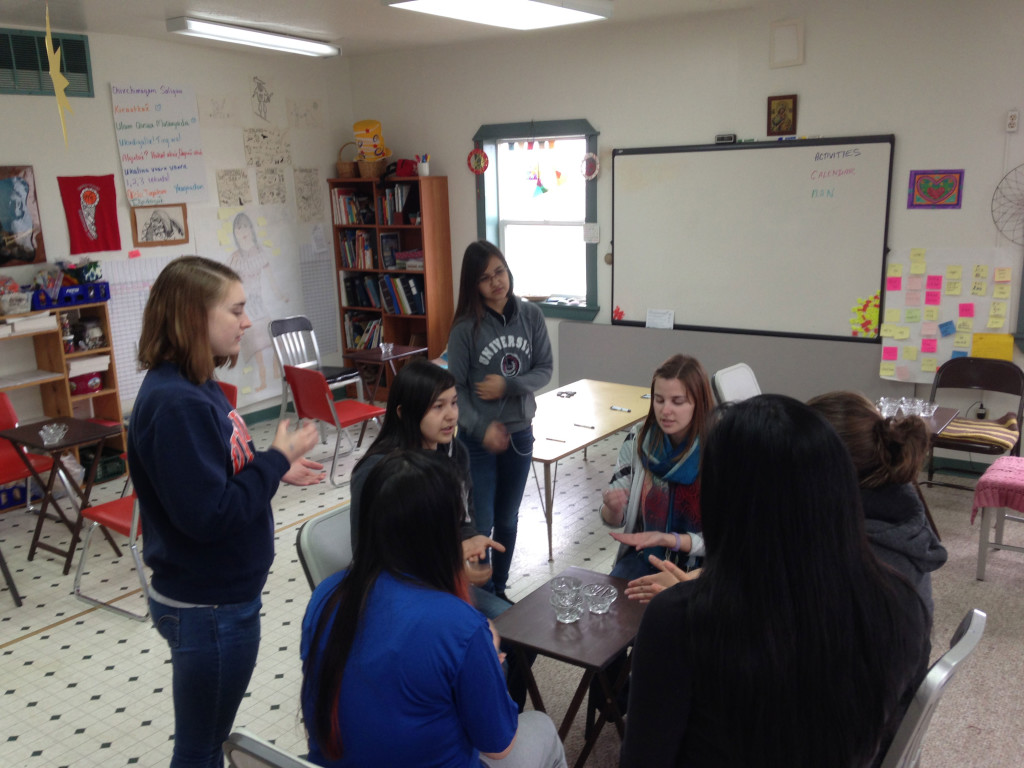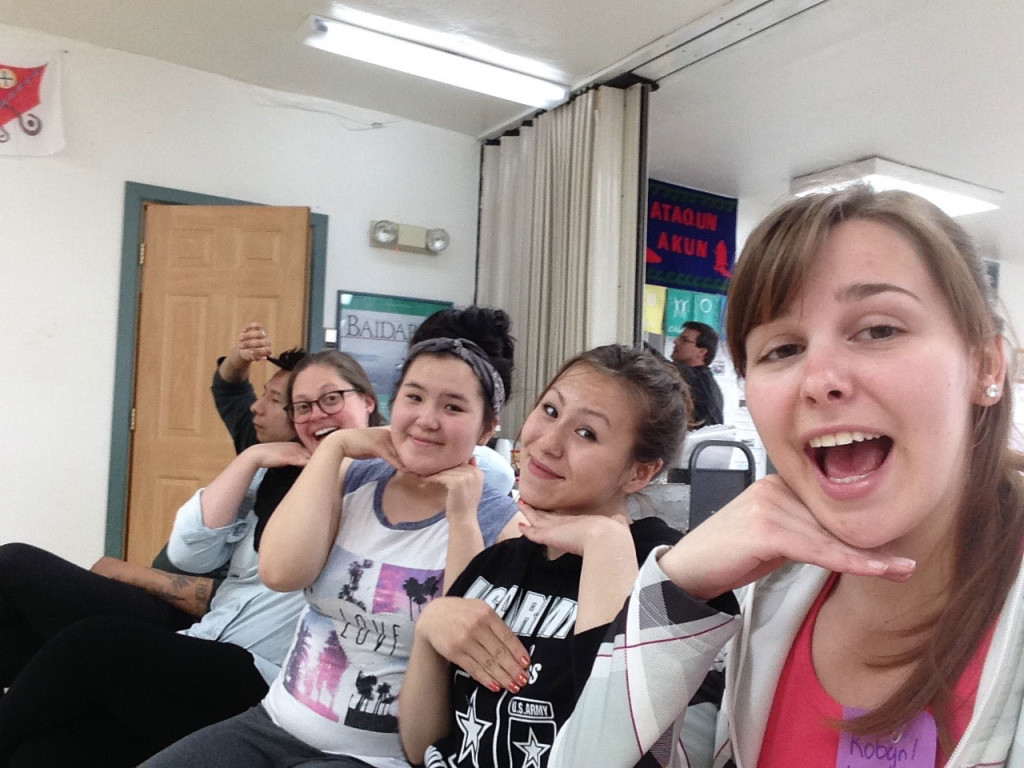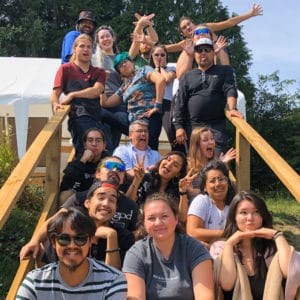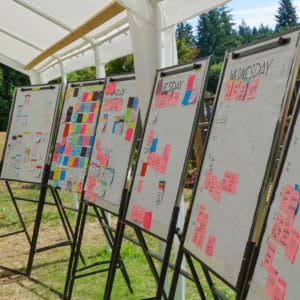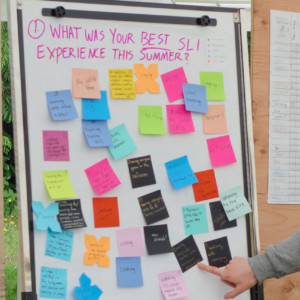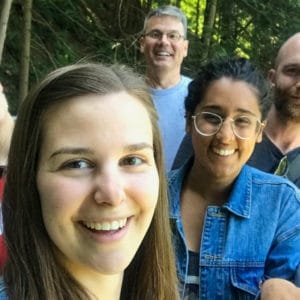Interning: do anything and everything #forthelanguage!
Explaining what it’s like to be a WAYK intern is no easy task. To be perfectly honest, I really had no idea what I was in for when I boarded the plane that would take me to St. Paul Island, Alaska. Even once I figured out what I was doing on a small island in the middle of the Bering Sea, I continued to struggle to explain it to my friends and family. If it were easy to explain what it’s like to be an intern, Evan and Susanna probably wouldn’t have asked the interns from Summer 2015 to write blog posts explaining what it’s like. So here’s my best attempt at explaining it. I’ll just preface this by saying I am not an outdoorsy person generally speaking, but this metaphor seems to really capture the essence of an internship with WAYK.
Imagine you get invited on an adventure trip with a few people you’ve never met before to hike up a really giant mountain that no one really visits anymore. The goal of the trip is to help re-mark some trails so that people begin hiking in the area again. You’re not an avid hiker per se but you’ve climbed a few small mountains before and you’re quite fascinated by the outdoors. You agree because it sounds pretty interesting. Upon arrival at base camp you’re told that you’re going to be guided by a few local experts (the speakers) who know the mountain extremely well, as well as the friends who invited you (Evan and Susanna), who have never climbed this particular mountain but are very experienced hikers. You’ll also be joined by a few other out-of-towners (the other two interns) and some other locals who’ve been around the mountain their whole life and have done a few day trips but never hiked to the top of the mountain.
The first few days on the trail you’re basically just doing whatever is asked of you, be it cooking dinner or filling water-bottles and you pass the time mostly by talking to the other non-locals. You try to just stay in the middle of the group and take in everything that is going on around you from the conversations to the scenery. As the days progress you find your legs and are able to occasionally keep up with the leaders at the front of the pack and start to recognize some of the things you’re seeing. You know which plants are dangerous and which trees provide the best shade, but you still get disoriented when it begins to get dark and you can’t quite tell which way is north and which is south. You slowly begin to stop relying on the map that you packed and stop comparing the mountain to every other mountain you’ve climbed or tried to climb. Some days your feet are so sore that you have to stop early, but the group is kind and they always make camp when you need. Other days you’re the one who feels like they could keep walking forever, but you return the favor and stop when everyone else is ready. Some days your hiking is also dictated by the weather. When a storm rolls in you keep close to camp but when the sun is shining you can cover more ground.
After you’ve been on the trail for a few days, the group splits so that we can cover more ground and explore more. Sometimes that means you get to forge ahead with a small group, including the local experts, and find a new trail that no one has walked on in a while. Other times it means you stay behind in camp and review the trails you’ve visited and document them on the new map you’re all creating. Occasionally someone from the town hikes up the mountain to spend a few days with you and everyone takes turns getting them caught up on all that you have discovered so far, including which trails are going to be the quickest to fix up and which trails will have to wait.
You’re eager to learn as much as you can and explore as much as you can so you always volunteer to take on extra tasks, especially if it means more time in the exploration group. As the out-of-towner though, sometimes it seems that a lot of maintenance jobs get delegated to you, like carrying extra supplies and cleaning up camp. There are some advantages to being a non-local though. When the guides need a volunteer to test out a new bridge or check how effective the signage is you often get to be the first. Since you’ve never explored the mountain and didn’t grow up hearing stories about it, the guides tend to have low expectations of your knowledge and there’s no pressure for you to remember where trails are or how they are connected on your first guess. You’re the one taking lots of test-runs and you’re happy to laugh at yourself when it doesn’t work out.
Everyone wants to be part of the exploration group though; it’s fun to learn new things and get more undivided attention from the experts. And it’s especially nice because it means you spend less time reviewing the first trails that you visited and are getting weary of discussing. Even though you enjoy the exploration crew and it would be fun to continue exploring, as the summer trip progresses you realize the skills are not as important for you since you’ll be leaving at the end of the summer. The other local hikers will continue exploring and marking new trails into the fall and well beyond, so you gracefully step-aside. You likely begin to spend less time on the explorations and instead you find ways to contribute based on your specific skills and try to fill the gaps. Perhaps that is digitizing the hand-drawn maps, creating new signage for the trails you’re finding, or developing more succinct ways to explain the trail system to new hikers.
When the summer ends you leave a few hikers up in the mountain and promise to send supplies and more hikers their way. You head back down the trail you came up with the two other out-of-towners and your mountain guides excited about all that you’ve learned and sad to leave the place that has become your home.
So how does all this talk about hiking and exploring actually relate to being a WAYK intern, where mountain climbing is not required (though a love of Saturday afternoon adventuring is encouraged)? Let me make the connection for you. Being an intern is exactly like climbing a mountain, a language-learning mountain. Instead of exploring for abandoned hiking trails and creating maps and signage you’re trying to document nearly-forgotten language and create lessons so that more people can learn. As an intern it’s your job to help out wherever possible, whether that is joining “language hunts” where you learn language from speakers or developing/testing/teaching language lessons. Sometimes you get the jobs that no one else wants but sometimes you also get unique opportunities to try things first. One of the best things about this internship is that there are opportunities to contribute to the project in so many ways depending on what skills you are bringing. Even skills that at first might seem totally unrelated to language learning like filmmaking or color-coded scheduling. The other big similarity between WAYK and hiking is the unpredictability. Some days you can plan for every eventuality, but when it rains it all goes out the window, so you have be willing and able to adapt and change plans. Basically, if you’re interested in learning a language, teaching a language, and working with an awesome group of people then sign up to be a WAYK intern. It will be the best summer of your life.
Post authored by Robyn.

